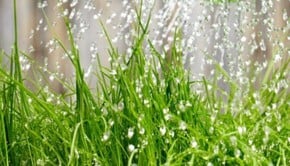The War Against Weeds
They are there, creeping in, lurking under the soil, waiting for the opportunity to attack.
If you have a lawn, you probably have experienced the never ending war on weeds.
Your best hope in winning any war is to know your enemy and how to defeat them. Read these tips on ways to defend your lawn against those pesky weeds and keep your lawn healthy throughout the year.
"The Best Defense is a Good Offense"
Maintaining a thick, healthy lawn is always the best way to prevent weeds from declaring war on your grass. Keeping up with lawn maintenance is the key to keeping weeds at bay. Here are some tips to stop weeds in their tracks:
- Longer grass blades provide shade for the soil, keep lawn at 2-3 inches in height. This keeps the soil cool, deterring weed seed germination and blocks sunlight from newly sprouted weeds, depriving them of nutrients they need to grow.
- Cutting about 1/3 of the blade clips off the weed seed heads before they can mature and germinate. Also, cutting too much grass at once can cause stress to your lawn, making it more susceptible to weeds.
- After applying fertilizer, hold off on mowing for a few days to allow the nutrients to soak into the soil.
- Watering grass deeply and infrequently. A general rule is 1 inch per week, including precipitation.
Weeds By Definition

Clover is considered a Broadleaf Weed
Broadleaf Weeds: With their broad, green leaves, and sometimes beautiful colors, these weeds are easy to identify. These weeds are aggressive and attack weak areas in your yard. Some examples include: dandelion, ground ivy, clover, creeping bellflower, and plantains.

Wild Onions are considered a grassy weed.
Grassy Weeds: These weeds look similar to grass and in some cases could be an unwanted grass variety, different from the one in your lawn. These are harder to identify, fast growing and tough to get rid of. Some examples include: crabgrass, annual bluegrass, goose grass and wild onion.
Declaring War
Herbicides
Herbicides work to fight against weeds in your lawn. Read the definitions of each to decide which you need to get rid of weeds:
Pre-emergent: These herbicides are best applied in early spring and late fall before any weeds are in plain sight. This herbicide will not kill established grass and is preventative in controlling weeds.
Post-emergent: These herbicides are used to attack already established weeds that are in plain sight and growing. Post-emergent herbicides come in two types, contact and systemic.
- Contact Herbicides: This herbicide kills parts of the plants that the chemical touches.
- Systemic: This herbicide affects every part of the weed and must be applied when weeds are actively growing. These herbicides are absorbed by the leaves, stem and roots to effectively kill the plant.
Hand Weeding

Hand weeding certain weeds, such as a plantain weed, can be more effective than using chemicals.
Pulling weeds by hand is one of the best defenses in a lawn where growth is not overwhelming. The most effective way to hand-weed is to pull the entire weed out, roots included. Most times roots break off in the ground, leaving sprout growth still possible.
Pulling the weed, including the root, out of the ground stops germination, eliminating the chance of spreading throughout your entire lawn.
Keeping Up With Your Weeds
Certain times of the year are better for weed treatment than others. Now that you’ve learned about different ways to kill weeds keep these tips in mind all year long. Use these guidelines to keep up with your lawn during different seasons:
Spring: Inspect lawn for any weeds that may have sprouted over the winter and decide on a treatment. Apply a pre-emergent as a preventative before annual weeds begin to grow.
Late Spring: Determine which weeds have sprouted and repeat a spot weed killer herbicide or remove the weeds by hand, remembering to remove the root.
Fall: If only a few weeds are present in the fall, remove them by hand weeding or applying a spot herbicide. If you have an overwhelming growth of weeds treat lawn with a general weed killer after final mowing.
Also, remember that the best defense against a weed attack is a healthy, thick lawn with longer blades to block the sunlight from providing the weed-seeds with proper nutrients to grow.
Featured Parts and Products






